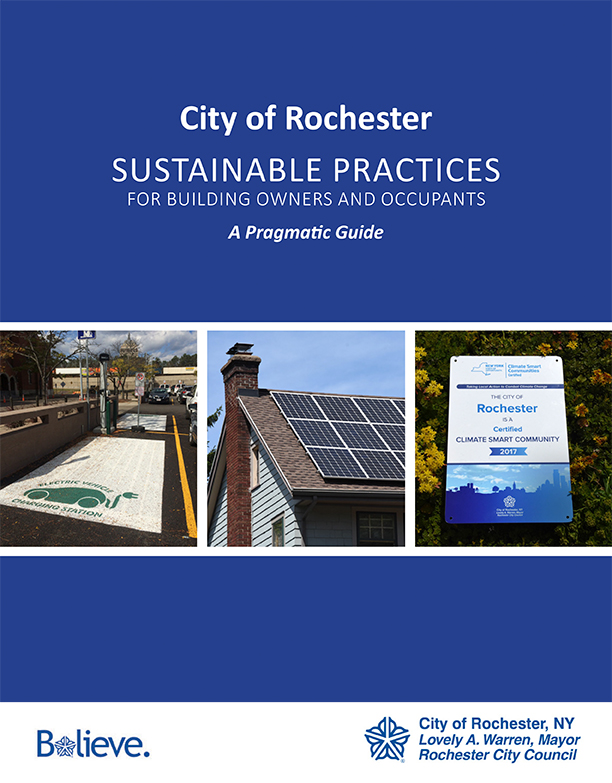The City of Rochester’s Office of Energy and
Sustainability has created a handbook entitled, “Sustainable Practices for Building
Owners and Occupants,” which provides guidance on practical solutions and informative
resources for all members of the Rochester community to incorporate sustainable
planning and design practices into one’s home, rental unit, or development of residential,
commercial, and mixed-use projects within the City.
The guide to sustainable practices handbook
is an extension of the City of Rochester Bureau of Planning & Zoning’s Developer Guidance Handbook, which assists
prospective developers through the City’s permitting and code requirements and
facilitates the City’s construction-related development and rehabilitation
processes. Furthermore, the guide to sustainable practices handbook is one of the implementation
actions of the City’s Climate Action Plan to reduce greenhouse gas (GHG)
emissions by 40% from 2010 levels by 2030.
The
target audience for this handbook includes developers, institutions, homeowners, and tenants.
Download the full handbook:

To view specific sections of the handbook as it pertains to
your needs and interests, please refer to the below links. Each linked section encompasses the related, bulleted subtopics.
Building Envelope
- Insulation
- Air infiltration
- Windows
Building Energy Efficiency
- High efficiency furnaces/boilers
- Heat pumps
- Lighting
- On-demand water heaters
- High efficiency appliances
- Internal energy monitoring
Renewable Energy
Water Efficiency
- Efficient fixtures
- Indigenous landscaping
Indoor Air Quality
- VOC-containing materials
- Mold/mildew prevention
Stormwater Management/Green Infrastructure
- Porous pavements
- Stormwater capture
- Green roofs
- Rain gardens
Recycling
Reuse of Building Materials
- Recycled materials
- Construction
- Demolition
Reuse of Vacant and Underutilized Properties
- Greyfield redevelopment
- Vacant land/underutilized properties
Green Space
- Create or enhance green open space networks
Transportation
- Parking
- Alternate transportation
Community-Oriented Services